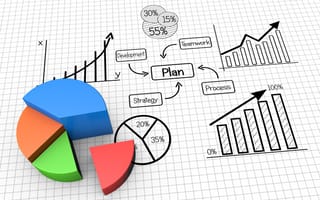The field of product management is growing. Google search trends show that interest in the term “product manager” doubled between 2015 and 2020, and Built In Chicago alone has over three hundred product manager jobs available right now.
Once a person has entered the product management field, though, they need a more granular understanding of the available positions. They might think, for example, that the only difference between a junior and senior product manager is the time spent in the role; however, if the roles are well-defined, the difference will be more complicated.
That’s not a bad thing. There should be a difference between any junior and senior position — not just for the sake of giving every member of the company their own feeling of contribution, but also to avoid redundancy and confusion. Having clearly delineated roles, skills and tasks between junior and senior product managers leads to a more efficient product management overall.
Sara Rossio, chief product officer at G2, understands how to clearly divide these two roles. While both positions are important for managing the trajectory of a company’s product, the senior manager has more leadership and planning responsibilities. Rossio elaborated further in her conversation with Built In Chicago.

In your organization, what are the key differences between junior and senior PMs — beyond the amount of time someone has spent in their role?
My expectation of a junior PM is to exhibit a strong understanding of how their team’s work impacts the company’s performance and executes toward the product and company vision. The junior PMs will own the documentation, communication and prioritization of work within their new product development team. This type of work is important and foundational to guiding teams.
But for a senior PM, I’m also looking for influence on strategic direction and drive for innovation. The senior PM understands and is an expert on the market and how their solution fits in so that new areas of investment can be identified and sold throughout the organization to invest. In some cases, they will also do the communication and prioritization within their new product development.
Simply put, a junior PM is shaping and executing the known roadmap, and a senior product manager is developing the roadmap while inspiring them to deliver complex and high-risk projects.
What skills, mindsets, and attitudes should an ambitious junior product manager develop if they want to move into a senior role at your company?
Curiosity and a learning mindset are key to becoming a great product manager. A junior product manager must observe and learn about users, the competition and next best alternatives and any other stakeholders. My advice is to dig deep into analytic tools, listen to sales calls and read about other market shifts that can impact your product. Having the curiosity to connect more deeply will help junior product managers identify trends and opportunities. Any junior PM must be able to quickly inspire teams and be willing to take on and manage risk. This will build confidence and trust across the organization for biggest projects.
At G2 we have a commitment to learning and development for everyone in which all team members work with their managers to develop a peak development plan that aligns with the skills they want to develop and with their career ambitions. Staying open to feedback and being willing to engage in learning — whether with stretch projects at G2 or using our learning and development funds for outside education — will ensure junior product managers are having authentic, meaningful conversations so they can progress to the next level.
A junior PM will build out more detailed requirements to improve existing products and features, whereas a senior PM will be exploring newer or high-risk areas. ”
Describe a recent project that your team worked on, and the differences between the roles of the junior and senior product managers who worked on it.
Each product manager at G2 is responsible for a specific solution, and their role is crafted so that scope and impact is clear. We match each person’s role, skills and aspirations so that we optimize learning, development and impact. For example, one of our senior PMs has a significant impact on G2’s growth trajectory — he recently led the development of the strategy expected to usher forward the next 12 to 18 months of development and outcomes. A junior product manager will understand this strategy and connect and document requirements for the next quarter.
As we bring our strategies to life, we update our roadmap every six weeks. Each cycle has review and engagement cycles regardless of product manager level. All PMs work closely to develop requirements, features and outcomes. Where the difference lies is in the scope and impact of their work; a junior PM will build out more detailed requirements to improve existing products and features, whereas a senior PM will be exploring newer or high-risk areas. Junior PMs will also likely be working very closely with their manager to align on priorities, where a senior PM will work more independently.







